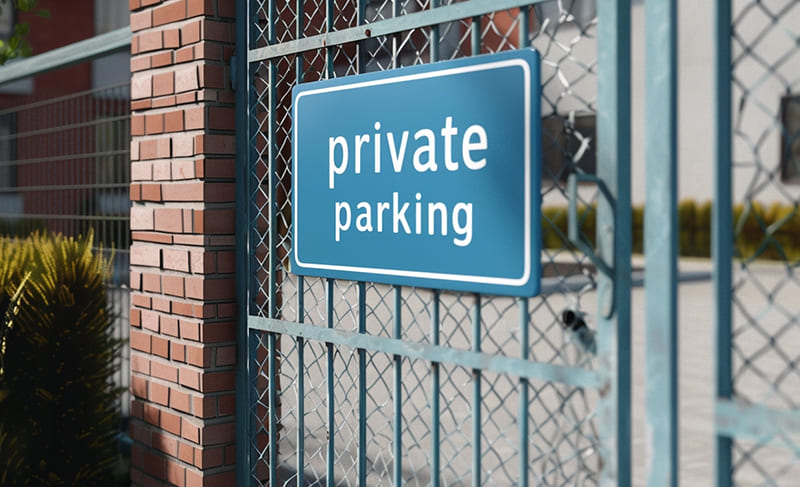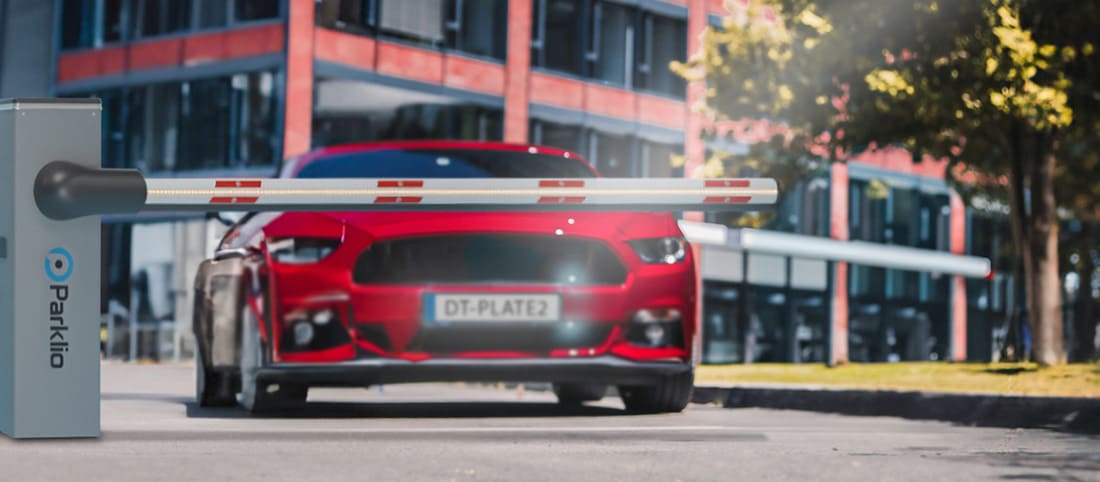Best Parking Protection Practices for Locations Without Constant Power

If you're facing the challenge of establishing a parking site in a power-limited setting, you understand that its distinctive circumstances demand solutions that cater to the specific needs of these locations. In this blog, we’ll explore practical methods that help to safeguard these areas effectively. To begin, let’s assess the specific challenges faced by such locations.
Table of contents:
Difficulties faced in power-limited parking areas
Power-limited parking sites refer to designated parking areas that are not connected to the traditional power grid or utility services. Often found in remote locations or outlying parts of urban areas, they lack the usual infrastructure, and the absence of electricity usually restricts the implementation of various security measures. Characteristic challenges in power-limited parking lots include:
Limited Lighting and Surveillance: Without access to a power supply, off-grid parking sites may struggle to implement adequate lighting and security measures such as surveillance cameras, motion sensors, and other security systems powered by electricity.
Limited Access Control: These parking sites often struggle with limited access control measures. Electronic gates, keycard systems, or other automated access control mechanisms require a power source to function effectively. Without electricity, manual access control methods such as physical keys or security personnel may be the only option available, unless supplemented by battery or solar-powered alternatives.
Limited Business Operations: Off-grid parking sites without electricity face challenges in achieving and sustaining contemporary business operations. Without electricity, it becomes challenging to provide amenities such as ticketing systems, payment terminals, and other operational tools.
Limited Data Collection: This refers to challenges in gathering and utilizing information about parking usage, user preferences, or operational data due to the absence or limitations of connectivity and infrastructure. This limitation can impact various aspects, such as understanding usage patterns or assessing the performance and efficiency of parking sites.
Limited Communication Options: Remote locations often suffer from a lack of reliable internet or cellular connectivity, which complicates staff communication and makes it challenging to address emergencies promptly. Moreover, this disrupts the ability to promptly and efficiently address customer inquiries and complaints.
As previously mentioned, the lack of electricity significantly affects various facets of power-limited parking areas. However, identifying and implementing adequate solutions can alleviate these difficulties and provide a proper option for parking needs. By implementing the following practices, you can ensure a reliable and efficient parking site, even without an accessible power supply.
Best parking protection practices for power-limited areas
Use Signage
In parking areas without constant power supply, where reliance on technology or continuous infrastructure support might be limited, clear, visible signage serves as a primary means of communication, providing directions, warnings, and information.
Place signs indicating that the area is private, under surveillance, that security measures are in place, or any other specific rules or regulations pertinent to your parking area. Position signs strategically, use reflective materials, high-contrast colors, and clear fonts to ensure visibility.

Install Solar-Powered Lighting
Power-limited parking areas can utilize solar-powered lighting systems to provide adequate illumination. Install solar panels, which will harness sunlight during the day and store energy in batteries for use during the night. This sustainable solution will ensure continuous lighting for your parking site without relying on the power grid.
Employ Wireless Surveillance Systems
To overcome the lack of power supply, you can employ wireless surveillance systems. These systems use battery-operated cameras that transmit video footage wirelessly to a central monitoring station. By utilizing efficient power management techniques, such as motion-activated camera recording, surveillance can be maintained without depending on external power sources.
Place Portable Alarm Systems
Your power-limited parking area can also benefit from portable alarm systems that operate on battery power. These compact devices can be strategically placed throughout the parking area and triggered by motion sensors or tampering. Depending on the model, portable alarm systems can be integrated with monitoring services or apps that will notify you remotely in case of activation.
Also read: How to choose the right parking barrier?
Enforce Manual Access Control
Another solution for power-limited parking protection is to enforce manual access control measures. This involves implementing manual parking barriers that require human intervention and verification for entry and exit. These barriers may come in various forms, including different types of gates, telescopic bollards, manual chain barriers, and even foldable barriers for a single parking space, controlled by attendants stationed at designated access points. The attendants ensure that only vehicles with valid permits or authorization gain passage, manually raising or lowering the barriers as needed.
While manual parking barriers are useful in certain contexts, their effectiveness heavily relies on the attentiveness and diligence of the attendants operating them. Despite the necessity for manpower, these barriers do offer a basic level of control and security. However, it's essential to note that human error or fluctuations in operational vigilance might affect their efficiency, which should be considered when implementing them at parking sites without a constant power supply.

Enforce Automatic Access Control with Smart Parking Barriers
Enforcing automatic access control with solar/battery-powered parking barriers at power-limited parking sites offers numerous advantages over manual barriers. These automated barriers harness solar energy or rechargeable batteries for operation, eliminating the need for a traditional power supply.
Equipped with vehicle detection sensors, integrated cameras, and remote control capabilities, they provide enhanced security, improved efficiency, and greater convenience for power-limited parking sites. These barriers also offer seamless access control, automatically opening and closing based on vehicle detection, and can integrate with access control systems for centralized monitoring and control. Integrated cameras and sensors add an extra layer of security. Also, their minimal maintenance requirements make them a cost-effective and sustainable solution for power-limited parking sites.
Moreover, advanced automatic parking barriers have the ability to be controlled via a smartphone, functioning even without an internet connection. Additionally, the smartphone app, which is compatible with all mobile devices, enables the sharing of digital keys, allowing users to grant access to designated individuals for entry to the parking site.
From single-space parking barriers that ensure designated spots to automatic gates enabling seamless vehicle passage, rising bollards offering selective access, and automatic chain barriers protecting wide entrances, each product contributes to streamlining the parking process.
What sets these smart systems apart is their ability to operate self-sufficiently in remote, power-limited locations. With the convenience of self-sufficiency, automatic parking barriers offer uninterrupted operation, ensuring a seamless experience for both vehicle and parking site owners.
Key takeaways
In conclusion, remember that a combination of these practices often provides optimal security. Assess the specific needs and vulnerabilities of your power-limited parking area to create a customized plan for the best possible protection of your parking site. Additionally, consulting with professionals can provide valuable insights and tailored recommendations based on your specific situation.


